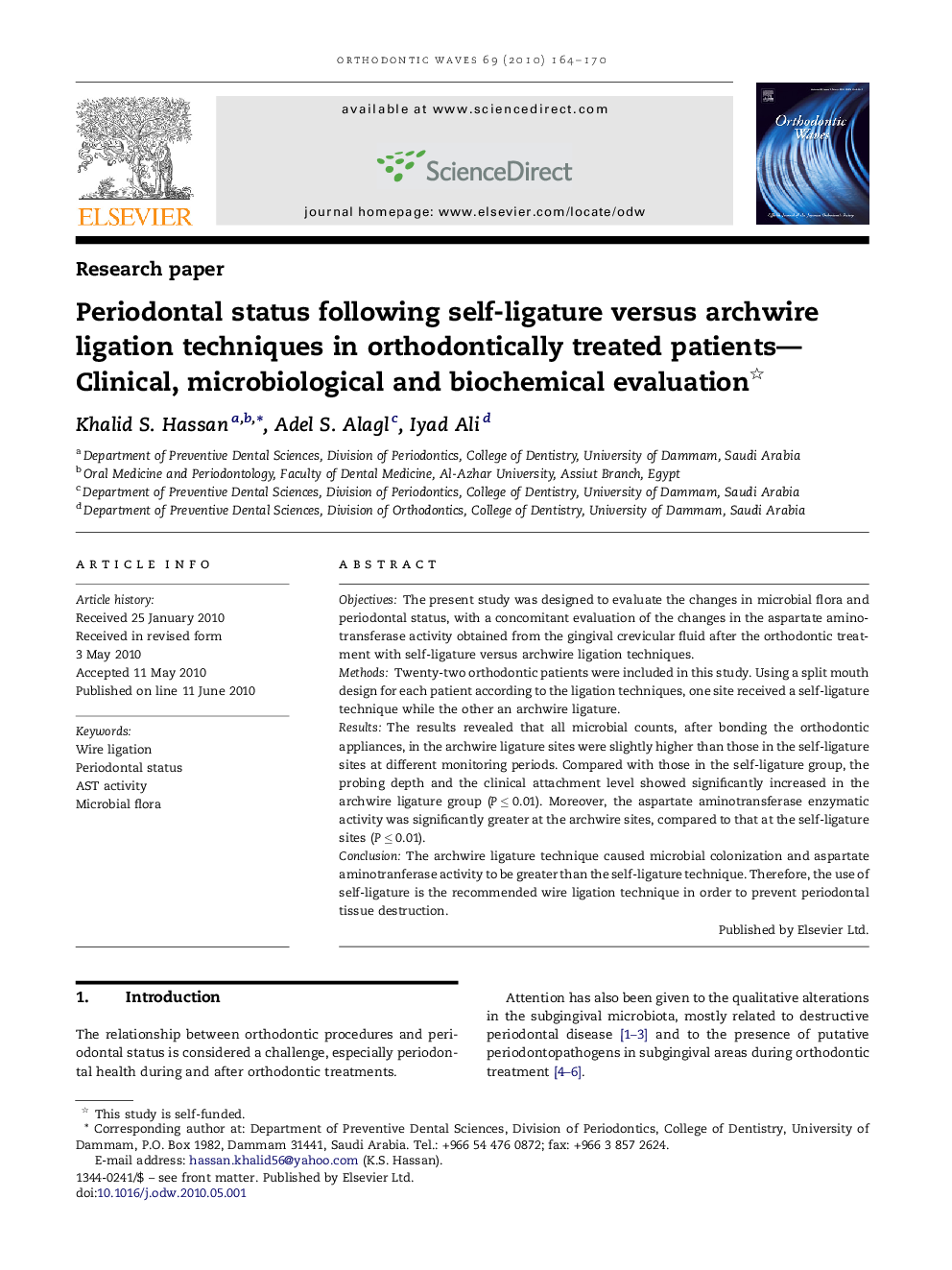| Article ID | Journal | Published Year | Pages | File Type |
|---|---|---|---|---|
| 3170556 | Orthodontic Waves | 2010 | 7 Pages |
ObjectivesThe present study was designed to evaluate the changes in microbial flora and periodontal status, with a concomitant evaluation of the changes in the aspartate aminotransferase activity obtained from the gingival crevicular fluid after the orthodontic treatment with self-ligature versus archwire ligation techniques.MethodsTwenty-two orthodontic patients were included in this study. Using a split mouth design for each patient according to the ligation techniques, one site received a self-ligature technique while the other an archwire ligature.ResultsThe results revealed that all microbial counts, after bonding the orthodontic appliances, in the archwire ligature sites were slightly higher than those in the self-ligature sites at different monitoring periods. Compared with those in the self-ligature group, the probing depth and the clinical attachment level showed significantly increased in the archwire ligature group (P ≤ 0.01). Moreover, the aspartate aminotransferase enzymatic activity was significantly greater at the archwire sites, compared to that at the self-ligature sites (P ≤ 0.01).ConclusionThe archwire ligature technique caused microbial colonization and aspartate aminotranferase activity to be greater than the self-ligature technique. Therefore, the use of self-ligature is the recommended wire ligation technique in order to prevent periodontal tissue destruction.
